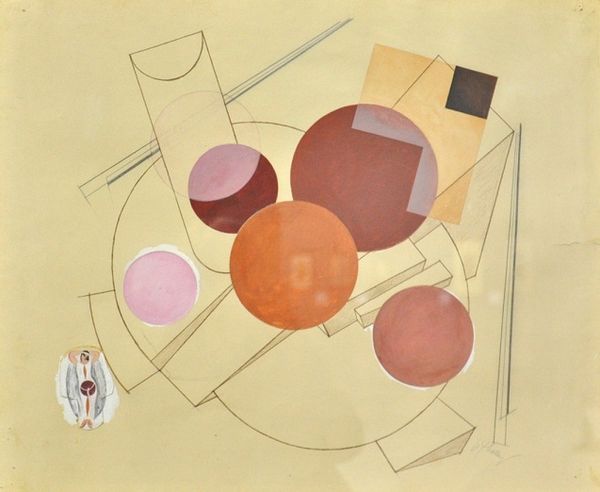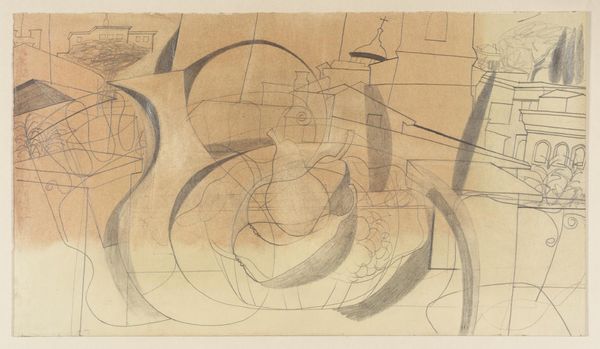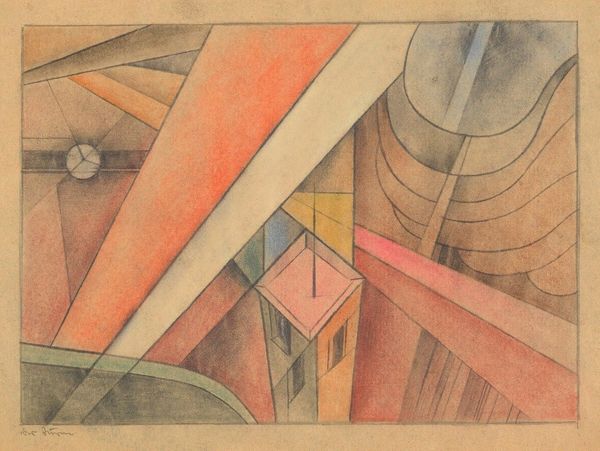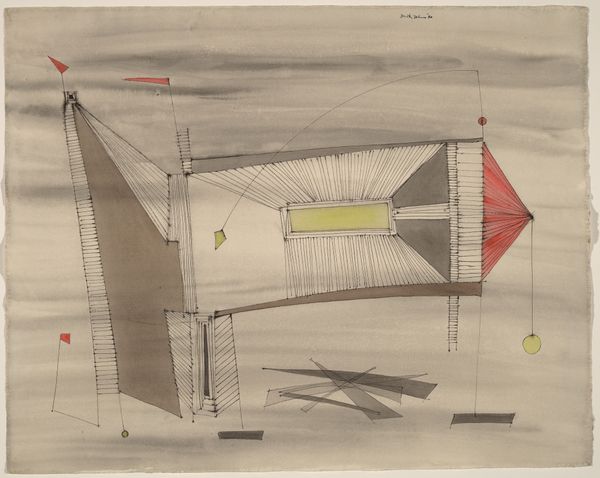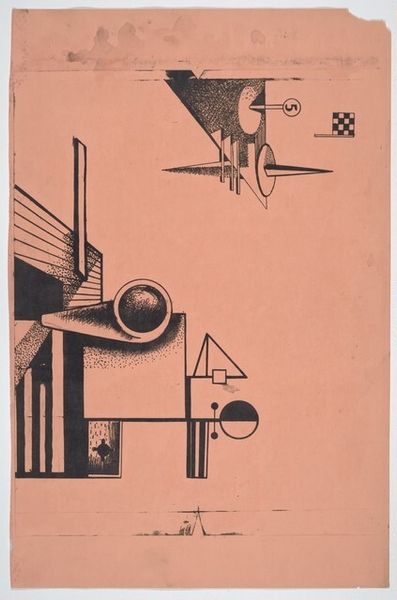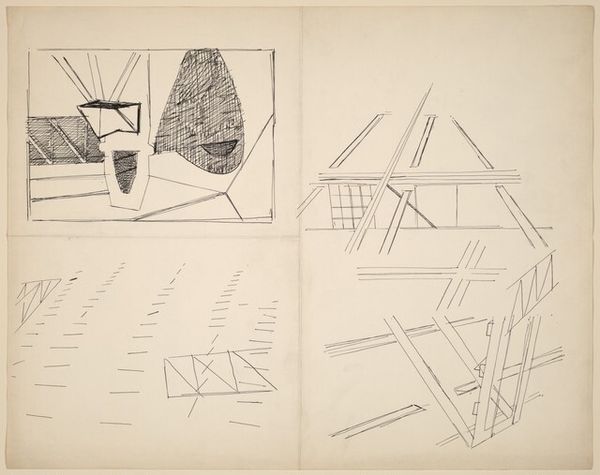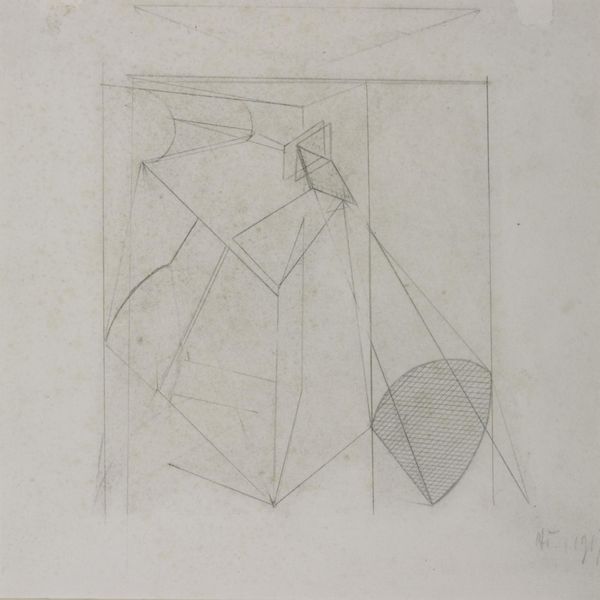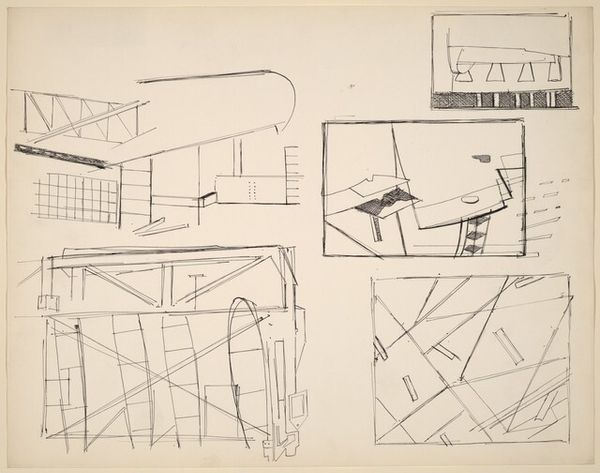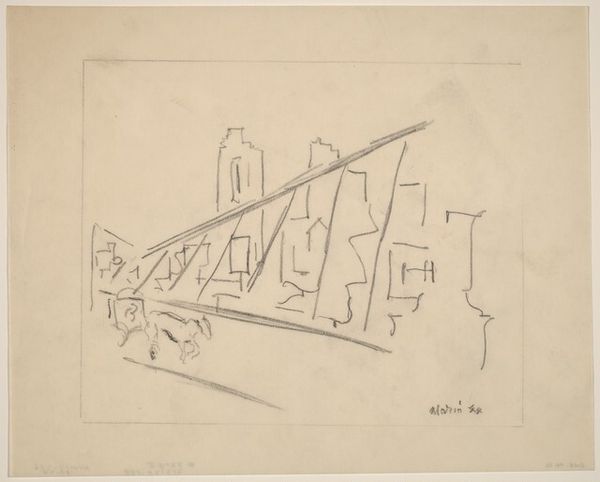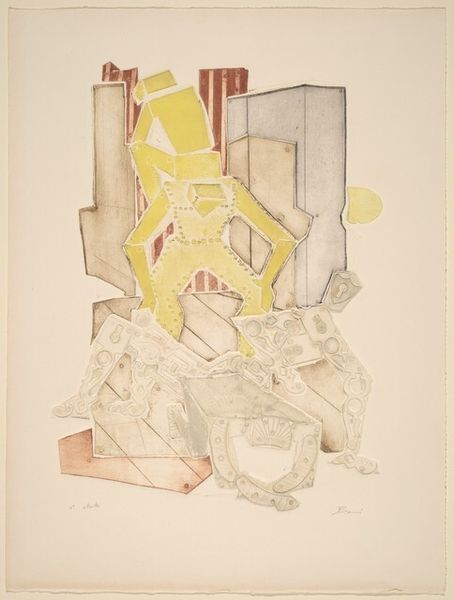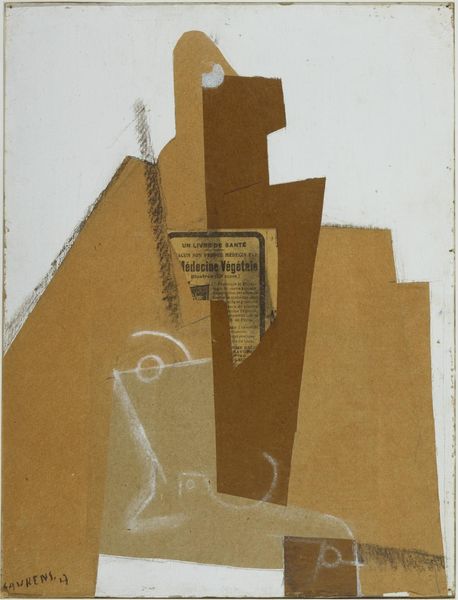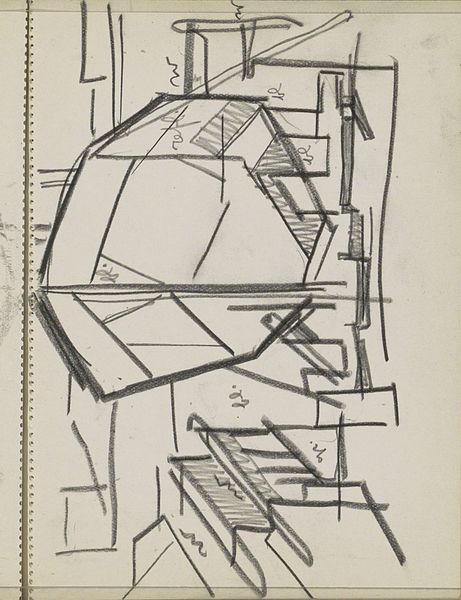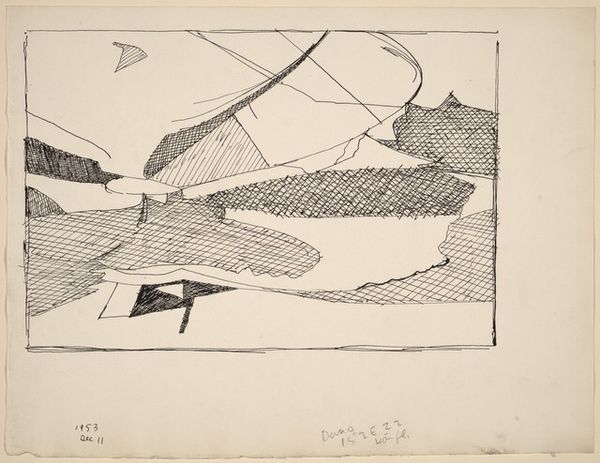
drawing, pencil
#
architectural sketch
#
drawing
#
cubism
#
pencil sketch
#
form
#
geometric
#
sketch
#
pencil
#
abstraction
#
line
Copyright: Alexander Khvostenko-Khvostov,Fair Use
Curator: Before us is Alexander Khvostenko-Khvostov’s 1929 pencil drawing, “Sketch of Scenery for the Opera 'Valkyrie'.” It's quite striking, isn't it? Editor: Yes, my initial feeling is disorientation, actually. The angular shapes, the implied lines… It’s a jumble of geometries, but I'm immediately drawn to the materiality of the pencil work and how those grey values imply the forms in space. Curator: Absolutely. Khvostenko-Khvostov’s utilization of Cubist techniques suggests not just visual representation but a deeper symbolism at play. Forms are broken down and reassembled, evoking a world in flux. Editor: It speaks volumes about the making of a stage. The layers of marks and erased lines tell the story of constructing the image. What stage machinery, raw material would make this image, if any? How would gravity affect those bars if assembled? Curator: The “Valkyrie,” part of Wagner’s Ring cycle, deals with themes of fate, heroism, and the struggle between the mortal and divine. So these sharp, geometric forms could mirror the fragmented and volatile nature of these epic themes, the very concept of destiny being a collision of hard lines. Editor: I wonder about the choice of pencil. It suggests a preliminary study, yes, but also an economy of means. Was it a conscious choice to highlight the raw, industrial feeling, by revealing the bones of scenography production? Curator: Interesting perspective. Also pencil holds a certain vulnerability. These marks are direct imprints of the artist's hand. So they reflect more human condition, perhaps. Editor: And considering the time, 1929… between wars, industrial expansion... that angular abstraction and almost mechanical feel becomes almost prophetic of some impending reality about materials of making. It all comes down to graphite and paper, right? That tension interests me. Curator: I see your point. And those few human forms in lower left could just be an operator and an actor; this emphasizes the role of labor in creating and staging mythology, too. Thanks, you offered a very intriguing perspective here. Editor: Indeed. Considering it now, what else could this all be made from? This image makes one rethink the base values.
Comments
No comments
Be the first to comment and join the conversation on the ultimate creative platform.
